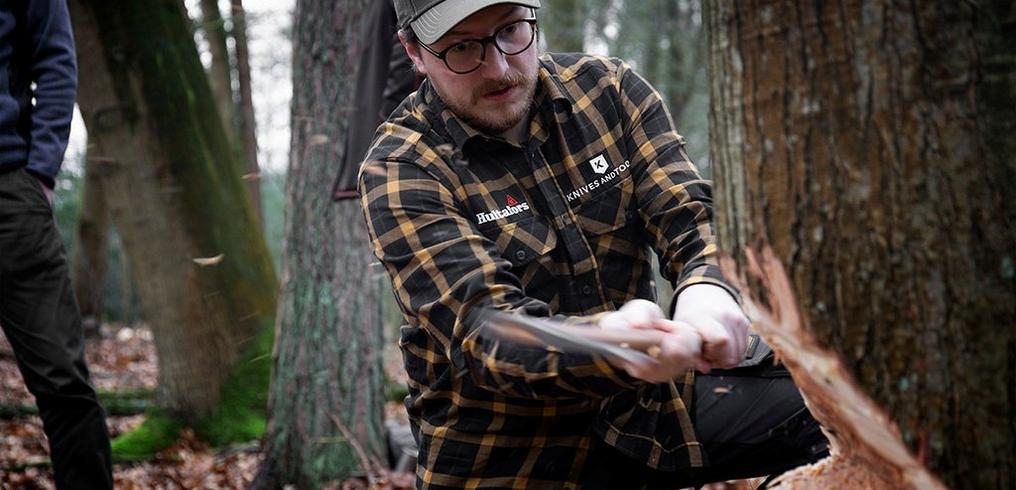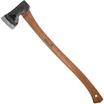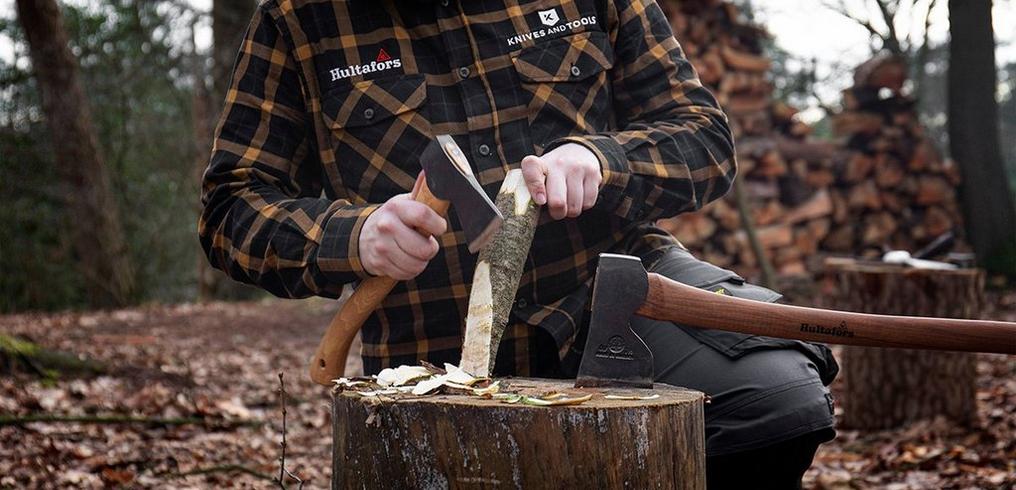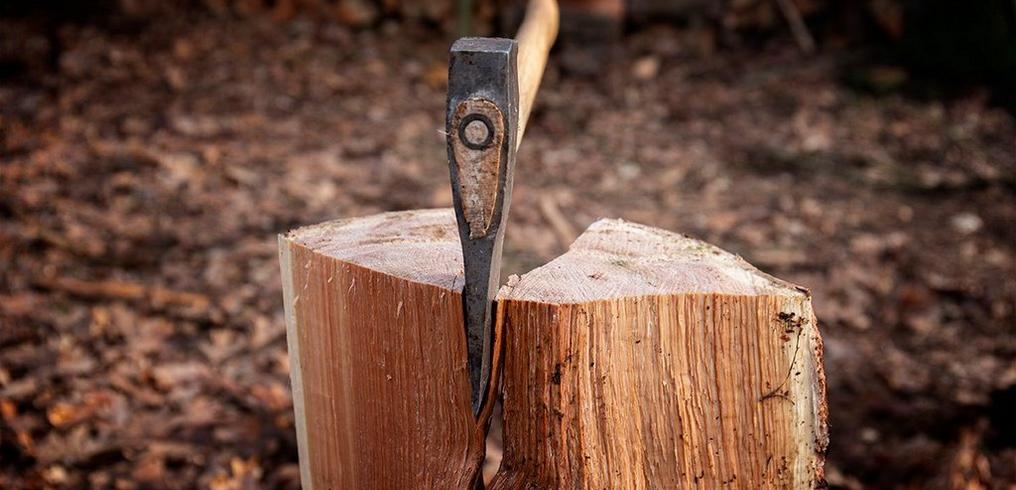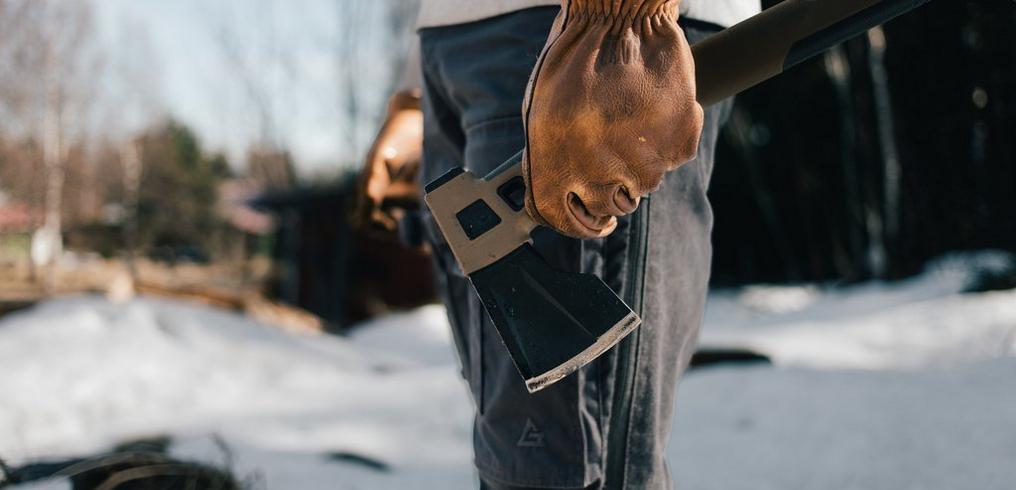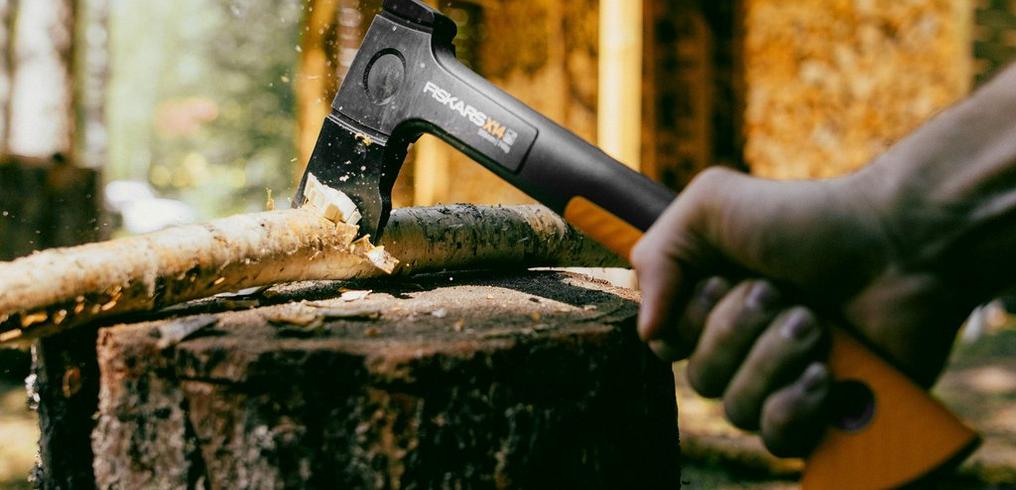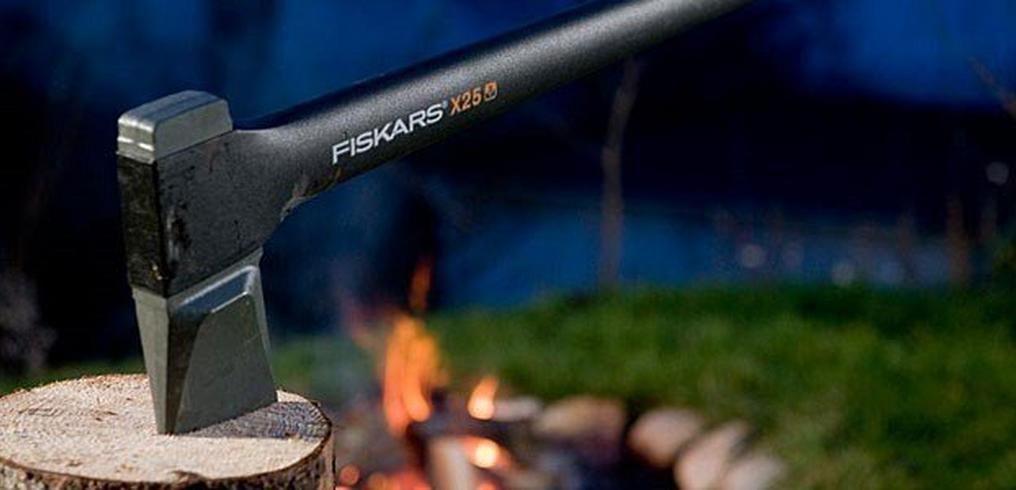Axes buying guide: what types of axes are there?
You want to find out which axe will suit you most. A good question! There are, after all, many different types of axes out there. The most important question is what you want to do with the axe. Think of: chopping, cleaving or throwing. If you use an axe for a purpose it is not meant for, it will cost you a lot of unnecessary energy and it can be dangerous. When making the right choice the weight of the head of the axe and the length of the handle are also key. We made a buying guide to help you find your way through the broad range of axes.
Contents
Felling axes: when felling trees
You need a felling axe if you effortlessly want to cut down trees. Feeling axes have the perfect balance between ergonomics and cutting power. For a felling axe it is important that the force of impact if transferred efficiently. That force of impact needs to lead to an effective cut. Cutting down a tree is a very remarkable experience. It is also very dangerous. It is therefore important to know what you are doing and what you need to pay attention to. Tips on how to safely cut down a tree? Read our how-to: felling a tree.
- These axes were specifically designed to fell (cut down) trees. But you can also use this type of axe to remove tree roots.
- You need both hands to use a felling axe.
- A felling axe needs to be sharp to remove a lot of material.
- A felling axe usually weighs between 1.5 and 2.5 kg.
- A felling axe is often between 50 and 65 cm long.
Top 5 felling axes
Splitting axes and hammers: splitting your own wood
To split wood there are special splitting axes and splitting hammers. The head of a splitting axe is shaped like a wedge. As such you can easily split wood. Don't use a (splitting)axe to hit a metal wedge! This could damage the axe. You use a splitting hammer to hit a metal wedge. When we say splitting larger pieces of wood we mean chopping the trunk of the tree into smaller pieces, which need to be stored to dry and can later on be used for the fireplace or for a campfire. You usually split larger pieces of wood with freshly cut wood. Splitting fresh wood is namely a lot easier and it will dry faster as well. So don't wait too long before splitting wood after cutting down a tree! Want to learn more about splitting larger piece of wood? Read all about it in our topic how-to: splitting wood.
- The splitting axe has a distinctively heavy head. Because of this weight you cannot use it for chopping tasks.
- The first part of the head of the splitting axe is thin to make sure the axe can easily enter the wood. Afterwards the head becomes thicker, easily splitting the wood.
- The edge of a splitting axe is straight and undamaged, but does not have to be razorsharp.
- You can also use a splitting hammer to hit a (metal) wedge. This is not possible with another axe. You recognize a splitting hammer by the thick, solid head and a flat, hammer-like back.
- There are small and large versions of the splitting axe or splitting hammer. As such their length ranges from 40 up to 90 cm.
- You often use both hands to handle a splitting axe, also because of the weight.
- The weight of a splitting axe or hammer depends on its length, but is mostly between 1.5 and 3.5 kg.
Want to learn more about the best splitting axes? Check out our top 10 list!
Top 5 splitting axes
Hand axes: for kindling and splitting and cleaving smaller pieces of wood
For the smaller cutting jobs you use a hand axe. A hand axe is also called a forestry/bushcraftaxe, campingaxe, hunters axe or trekking axe. With these axes you can easily produce kindling and these tools are great for the smaller splitting tasks. Because of its compact size you can easily take the hand axe with you when you go hiking or camping. Hanging from your backpack, for instance. Want to learn more about how to split smaller pieces of wood? Read all about it in our topic how-to: producing kindling.
- Perfect for small chopping tasks, such as making kindling.
- Indispensable during every camping adventure. Use the axe head to cut feathersticks, * to make sure a couple sparks from a firesteel are enough to start a fire.
- You often only need one hand to properly use this axe. The axe is not too large and not too heavy.
- A trekking/forestry axe needs to be razor-sharp to remove a lot of material.
- A hand axe usually weighs between 600 grams and 1.5 kg.
- A hand axe is often between 45 and 65 cm long.
Top 5 hand axes
Throwing axes
What once started out in the United States is now also popular in Europe: axe throwing. A lively competition. These axes are also called tomahawks or racing axes. They were originally used by the Native Americans. Because of their weight these axes are also popular amongst bushcraft enthusiasts and hikers.
- The throwing axe was originally produced to work with. One side was slightly sharper than the other. The blunter part was used for the parts of the tree that affect the sharpness of the axe, like knots.
- Today this axe is mostly used at contests.
- This type of axe usually weighs around 1 kg.
- The length of this type of axe is usually between 30 and 40 cm.
Want to learn more about the best throwing axes? Check out our top list!
Top 5 throwing axes
All about axes
On the page, All about axes you will find all information you need for a full axe experience. From the anatomy of an axe to how to fell a tree. We also explain how to best sharpen an axe. In short: submerge yourself in the world of axes.
